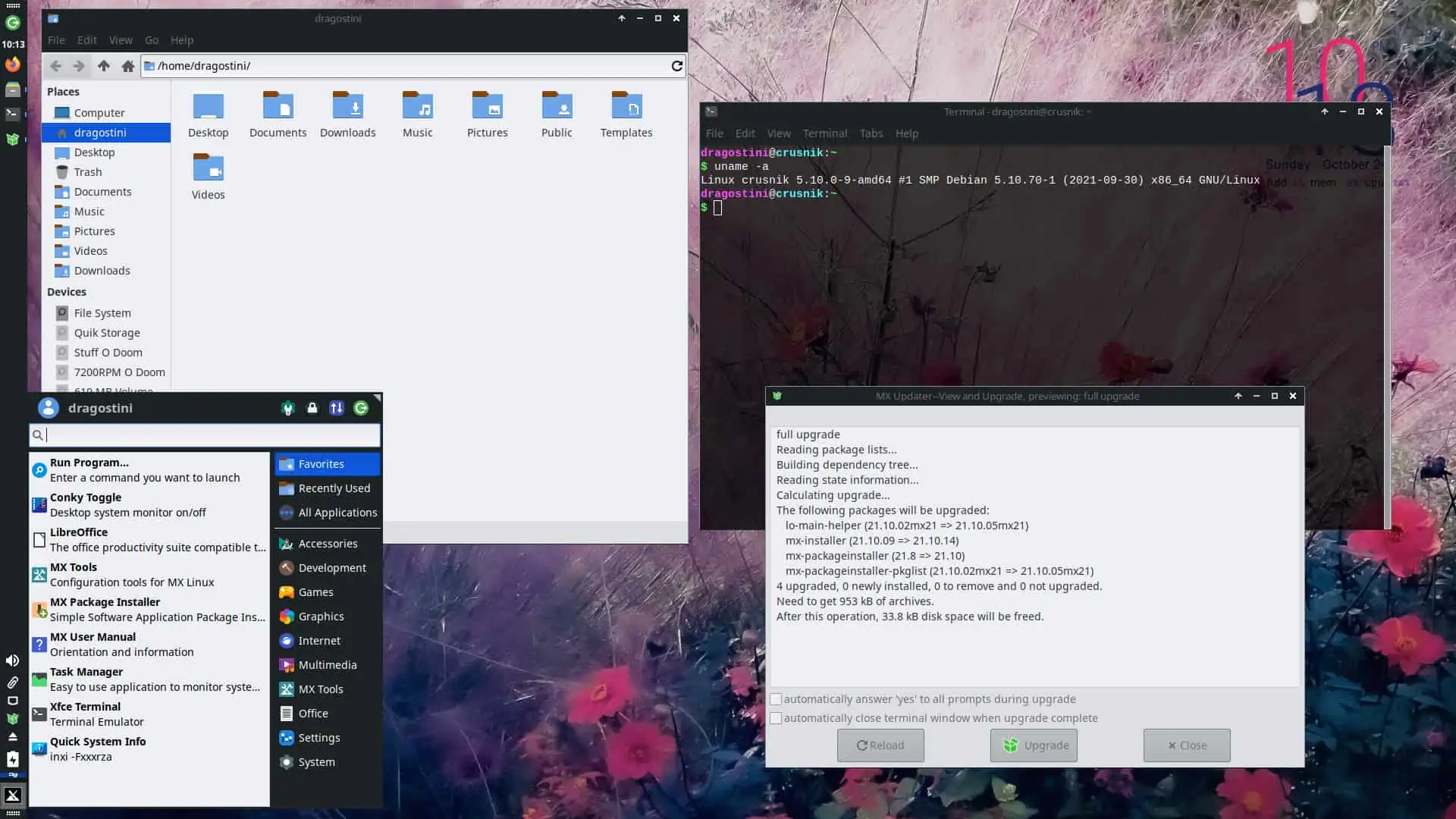Distrowatch Top 5 Distributions review: MX Linux


I didn’t like the layout of the main panel being on the side, and I’m not a big fan of Xfce typically...but once I organized things a little more to my liking, I found MX Linux was a pleasure to use, responsive, fast, and had more tools than you can shake a stick at...So new users will likely not need to use the terminal for anything really, it’s all right there in nice custom-made GUI tools, however, power users may also find the simplicity of some of these tools quite handy too.
Being based on Debian will also help to ensure that MX Linux stays rock solid stable, and there should rarely be crashes or broken packages. I would recommend MX Linux to anyone who cares more about stability than bleeding edge package updates, as well as people looking for a strong distribution that does not use Systemd.
-

- Login or register to post comments
 Printer-friendly version
Printer-friendly version- 2546 reads
 PDF version
PDF version
More in Tux Machines
- Highlights
- Front Page
- Latest Headlines
- Archive
- Recent comments
- All-Time Popular Stories
- Hot Topics
- New Members
digiKam 7.7.0 is released
After three months of active maintenance and another bug triage, the digiKam team is proud to present version 7.7.0 of its open source digital photo manager. See below the list of most important features coming with this release.
|
Dilution and Misuse of the "Linux" Brand
|
Samsung, Red Hat to Work on Linux Drivers for Future Tech
The metaverse is expected to uproot system design as we know it, and Samsung is one of many hardware vendors re-imagining data center infrastructure in preparation for a parallel 3D world.
Samsung is working on new memory technologies that provide faster bandwidth inside hardware for data to travel between CPUs, storage and other computing resources. The company also announced it was partnering with Red Hat to ensure these technologies have Linux compatibility.
|
today's howtos
|









.svg_.png)
 Content (where original) is available under CC-BY-SA, copyrighted by original author/s.
Content (where original) is available under CC-BY-SA, copyrighted by original author/s.

Recent comments
1 year 11 weeks ago
1 year 11 weeks ago
1 year 11 weeks ago
1 year 11 weeks ago
1 year 11 weeks ago
1 year 11 weeks ago
1 year 11 weeks ago
1 year 11 weeks ago
1 year 11 weeks ago
1 year 11 weeks ago